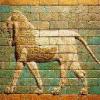No one should go running off taking any of these compounds without seeking independent medical advice from a doctor, I just want to bring something up for discussion purposes.
What I want to discuss is butyrate and its prodrug tributyrin - people have noted how quickly butyrate is metabolised, but it seems tributyrin has much better pharmokinetics and the other interesting thing is that tributyrate is sold as a food grade flavor?! 10kg for 200 British pounds? Am I mistaken? Apparently it's naturally present in butter as well. Perhaps selective HDAC 3 inhibitors like this RGFP966 should be studied further? Here it was used to enhance the extinction of cocaine seekinng behavior: http://www.pnas.org/...364110.full.pdf
Tributyrin, a Stable and Rapidly Absorbed Prodrug of Butyric Acid, Enhances Antiproliferative Effects of Dihydroxycholecalciferol in Human Colon Cancer Cells
Tanja Gaschott, Dieter Steinhilber*, Vladan Milovic, and Jürgen Stein2
"Butyrate, a normal constituent of the colonic luminal contents, is formed by bacterial fermentation of unabsorbed complex carbohydrates in the mammalian digestive tract. In normal colonic mucosa, butyrate serves as a primary energy source, promotes growth of normal colonic epithelial cells in vivo and in vitro and plays a role in preventing certain types of colitis (1). In contrast, in a wide variety of neoplastic cells, butyrate acts as a potent antineoplastic agent, i.e., it inhibits growth and induces differentiation, restoring normal phenotype and function (2). The studies done during the last decade provide multiple lines of evidence that butyrate indeed interferes with the pathogenesis of colorectal cancer. Butyrate inhibits DNA synthesis and arrests growth of neoplastic colonocytes in G1 (3), modifies expression of genes involved in chemotherapy resistance (4) and in cell proliferation/differentiation (5, ,6), and induces apoptosis by a p53-independent pathway (7). At least some of butyrate?s antineoplastic effects in colon cancer cells may be due to its synergistic action with another antiproliferative agent, 1,25-dihydroxyvitamin D3 [dihydroxycholecalciferol; (OH)2D3]. In various cancer cell lines it has been shown that butyrate and (OH)2D3 act synergistically in reducing proliferation and enhancing differentiation of neoplastic cells (8, 9, 10).
In spite of its early promise, butyrate is not among the drugs used for cancer treatment. The major problem has been to achieve and maintain its millimolar concentrations in blood. Butyrate is metabolized rapidly as soon as it enters the colonocyte via its active transport system (11, 12, 13), and its plasma concentrations are far below those required to exert its antiproliferative/differentiating actions.
A prodrug of natural butyrate, tributyrin, is a neutral short-chain fatty acid triglyceride that is likely to overcome the pharmacokinetic drawbacks of natural butyrate as a drug (14). Because it is rapidly absorbed and chemically stable in plasma, tributyrin diffuses through biological membranes and is metabolized by intracellular lipases, releasing therapeutically effective butyrate over time directly into the cell. Compared with butyrate, tributyrin has more favorable pharmacokinetics (14, 15, 16) and is well tolerated (17). Liquid tributyrin filled into gelatin capsules and administered orally resulted in millimolar concentrations of butyrate both in plasma and inside the cell (17). In vitro, tributyrin has potent antiproliferative, proapoptotic and differentiation-inducing effects in neoplastic cells (18, 19, 20). In this study, human colon cancer cells (Caco-2) were used to investigate the effects of tributyrin on growth and differentiation."
Clinical Trials -
1) Phase I study of the orally administered butyrate prodrug, tributyrin, in patients with solid tumors.
Butyrates have been studied as cancer differentiation agents in vitro and as a treatment for hemoglobinopathies. Tributyrin, a triglyceride with butyrate molecules esterified at the 1, 2, and 3 positions, induces differentiation and/or growth inhibition of a number of cell lines in vitro. When given p.o. to rodents, tributyrin produces substantial plasma butyrate concentrations. We treated 13 patients with escalating doses of tributyrin from 50 to 400 mg/kg/day. Doses were administered p.o. after an overnight fast, once daily for 3 weeks, followed by a 1-week rest. Intrapatient dose escalation occurred after two courses without toxicity greater than grade 2. The time course of butyrate in plasma was assessed on days 1 and 15 and after any dose escalation. Grade 3 toxicities consisted of nausea, vomiting, and myalgia. Grades 1 and 2 toxicities included diarrhea, headache, abdominal cramping, nausea, anemia, constipation, azotemia, lightheadedness, fatigue, rash, alopecia, odor, dysphoria, and clumsiness. There was no consistent increase in hemoglobin F with tributyrin treatment. Peak plasma butyrate concentrations occurred between 0.25 and 3 h after dose, increased with dose, and ranged from 0 to 0.45 mM. Peak concentrations did not increase in three patients who had dose escalation. Butyrate pharmacokinetics were not different on days 1 and 15. Because peak plasma concentrations near those effective in vitro (0.5-1 mM) were achieved, but butyrate disappeared from plasma by 5 h after dose, we are now pursuing dose escalation with dosing three times daily, beginning at a dose of 450 mg/kg/day.
2) Clinical and pharmacologic study of tributyrin: an oral butyrate prodrug
"Purpose
Butyrate is a small polar compound able to produce terminal differentiation and apoptosis in a variety of in vitro models at levels above 50?100 ?M. Previously our group demonstrated that daily oral administration of the prodrug, tributyrin, is able to briefly achieve levels >100 ?M. Given in vitro data that differentiating activity requires continuous butyrate exposure, the short t1/2 of the drug and a desire to mimic the effects of an intravenous infusion, we evaluated a three times daily schedule.
Patients and methods
Enrolled in this study were 20 patients with advanced solid tumors for whom no other therapy was available, had life expectancy greater than 12 weeks, and normal organ function. They were treated with tributyrin at doses from 150 to 200 mg/kg three times daily. Blood was sampled for pharmacokinetic analysis prior to dosing and at 15 and 30 min and 1, 1.5, 2, 2.5, 3, 3.5 and 4 h thereafter.
Results
The patients entered comprised 15 men and 5 women with a median age of 61 years (range 30?74 years). Prior therapy regimens included: chemotherapy (median two prior regimens, range none to five), radiation therapy (one), no prior therapy (one). There was no dose-limiting toxicity. Escalation was halted at the 200 mg/kg three times daily level due to the number of capsules required. A median butyrate concentration of 52 ?M was obtained but there was considerable interpatient variability. No objective responses were seen. There were four patients with prolonged disease stabilization ranging from 3 to 23 months; median progression-free survival was 55 days. Two patients with chemotherapy-refractory non-small-cell lung cancer had survived for >1 year at the time of this report without evidence of progression.
Conclusion
Tributyrin is well tolerated and levels associated with in vitro activity are achieved with three times daily dosing."
3) No results posted here? http://www.clinicalt...ibutyrin&rank=1
Hypothesized mechanism of action for tributyrin seems to be:
Tributyrin -> therapeutic levels of Na butyrate in vivo -> HDAC 3 inhibition -> increased GDF 11 expression
Activation of the Growth-Differentiation Factor 11 Gene by the Histone Deacetylase (HDAC) Inhibitor Trichostatin A and Repression by HDAC3
Xiaohong Zhang, Walker Wharton, [...], and Edward Seto
"Together, our results provide a new model in which HDAC inhibitors reverse abnormal cell growth by inactivation of HDAC3, which in turn leads to the derepression of gdf11 expression."
[...]
"...To confirm that HDAC3 is involved in the repression of the gdf11 promoter, we used a DNA vector-based RNA interference (RNAi) method to suppress HDAC3 expression in HeLa cells. small interfering RNAs (siRNAs) targeting HDACs 1, 2, and 3 synthesized from the BS/U6 template efficiently inhibited the expression of HDAC1, -2, and -3, respectively, but not of the control protein ?-actin, as monitored by immunoblotting (Fig. ?(Fig.4C).4C). Transfection with the BS/U6 vector (control) had no effect on the abundance of any of the HDACs. In full agreement with the observation that HDAC3 overexpression represses the activity of the gdf11 promoter, depletion of HDAC3 but not HDAC1 or HDAC2 significantly increased the activity of the pGL191 promoter. These results strongly support the premise that HDAC3 represses transcription from the gdf11 promoter."
Sodium butyrate stimulates expression of fibroblast growth factor 21 in liver by inhibition of histone deacetylase 3.
Abstract
Fibroblast growth factor 21 (FGF21) stimulates fatty acid oxidation and ketone body production in animals. In this study, we investigated the role of FGF21 in the metabolic activity of sodium butyrate, a dietary histone deacetylase (HDAC) inhibitor. FGF21 expression was examined in serum and liver after injection of sodium butyrate into dietary obese C57BL/6J mice. The role of FGF21 was determined using antibody neutralization or knockout mice. FGF21 transcription was investigated in liver and HepG2 hepatocytes. Trichostatin A (TSA) was used in the control as an HDAC inhibitor. Butyrate was compared with bezafibrate and fenofibrate in the induction of FGF21 expression. Butyrate induced FGF21 in the serum, enhanced fatty acid oxidation in mice, and stimulated ketone body production in liver. The butyrate activity was significantly reduced by the FGF21 antibody or gene knockout. Butyrate induced FGF21 gene expression in liver and hepatocytes by inhibiting HDAC3, which suppresses peroxisome proliferator-activated receptor-? function. Butyrate enhanced bezafibrate activity in the induction of FGF21. TSA exhibited a similar set of activities to butyrate. FGF21 mediates the butyrate activity to increase fatty acid use and ketogenesis. Butyrate induces FGF21 transcription by inhibition of HDAC3.
There are different types of HDAC inhibitors, but lets find out what the down sides of specifically tributyrin and butyrate are - Anyone know enough about sirtuins to interpret this?:
Differential regulation of the Sir2 histone deacetylase gene family by inhibitors of class I and II histone deacetylases.
Abstract
The Sir2 histone deacetylase gene family consists of seven mammalian sirtuins (SIRTs) which are NAD-dependent histone/protein deacetylases. Sir2 proteins regulate, for instance, genome stability by chromatin silencing in yeast. In mammals, their function is still largely unknown. Due to the NAD+ dependency, Sir2 might be the link between metabolic activity and histone/protein acetylation. Regulation of gene expression also seems to play an important role in Sir2 functions, since increasing the dosage of Sir2 genes increases genome stability in yeast and Caenorhabditis elegans. We observed that the modification of histone/protein acetylation status by several class I and II histone deacetylase (HDAC) inhibitors induces differential changes in gene expression profiles of seven SIRT mRNAs in cultured neuronal cells. SIRT2, SIRT4 and SIRT7 were upregulated, whereas SIRT1, SIRT5 and SIRT6 were downregulated by trichostatin A (TSA) and n-butyrate. The upregulation of SIRT mRNAs was inhibited by actinomycin D. Interestingly, the regulation of SIRT mRNAs was highly similar both in mouse Neuro-2a neuroblastoma cells and post-mitotic rat primary hippocampal and cerebellar granule neurons. Using a chromatin immunoprecipitation technique, we showed that the upregulation of SIRT2 expression with TSA is related to the hyperacetylation of DNA-bound histone H4 within the first 500 bp upstream of the transcription start site of the SIRT2 gene. Chemically different types of HDAC inhibitors, such as TSA, apicidin, SAHA, M344 and n-butyrate induced remarkably similar responses in SIRT1-7 mRNA expression patterns. Differential responses in SIRT mRNA expression profiles indicate that the expression of the Sir2 family of genes is selectively regulated and dependent on histone/protein acetylation status.
Edited by Phoenicis, 14 May 2014 - 04:55 PM.





















































